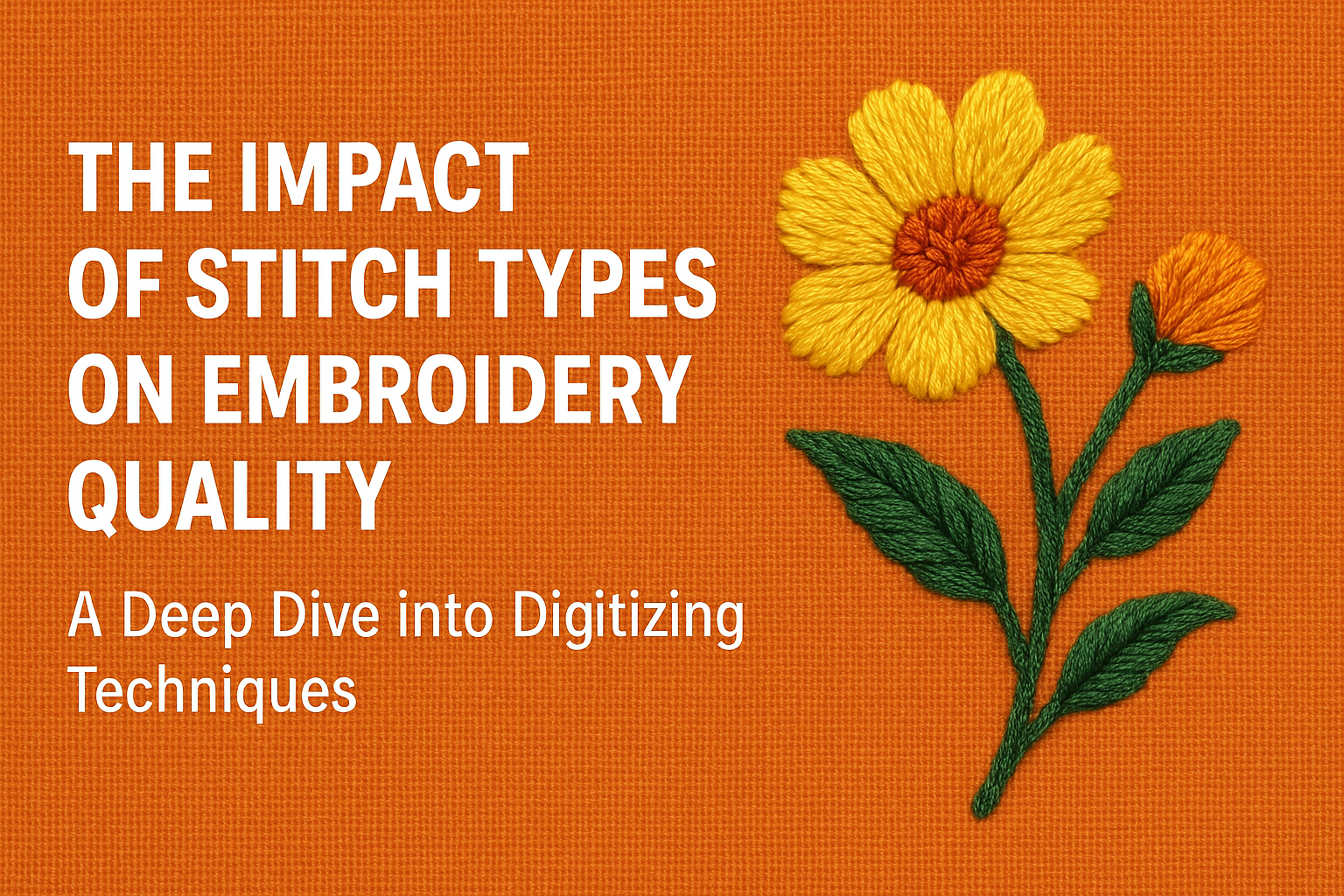In the world of custom embroidery, perfect results begin with properly prepared artwork. Whether you’re a client submitting a logo for headwear, a print shop working with apparel brands, or a digitizer communicating with customers—this guide is made for you.
Embroidery is a whole different language compared to printing or digital graphics. You’re working with thread tension, stitch angles, and material behavior, not just pixels and vectors. That’s why preparing artwork correctly before digitizing is essential for clean, production-ready embroidery.
🎯 Want files that sew out perfectly the first time?
Infuse Digitals offers expert digitizing services for caps, apparel, uniforms, and more.
Why Artwork Preparation Matters in Embroidery
Digitizing is not just file conversion—it’s a technical art. If you send low-resolution, over-complicated, or improperly formatted artwork, it increases the risk of:
- Thread breaks
- Misaligned stitches
- Blocky or unreadable text
- Unnecessary back-and-forth revisions
Clean, well-prepared artwork means your digitizer can focus on optimizing stitch logic instead of redrawing your logo from scratch.
✅ 1. Use High-Resolution or Vector Files
Your starting point matters. The best digitizing results come from vector files such as:
.AI,.EPS,.SVG, or vector.PDF
If you don’t have a vector version, use a high-resolution raster file (like .PNG or .JPG) that’s at least 300 DPI. Avoid blurry images, screenshots, or compressed web files.
✅ 2. Simplify Overly Detailed Artwork
Embroidery isn’t ideal for tiny gradients, photo effects, or micro-details. Here’s what to avoid or simplify:
- Soft shadows or glow effects
- Intricate background textures
- Small inner shapes or icons
- Detailed illustrations meant for print, not thread
Pro Tip: Think like a thread—not a brush or pen.
✅ 3. Convert Fonts to Outlines or Share Font Files
If your logo contains custom text, either:
- Convert it to outlines (in Illustrator: Right-click > Create Outlines)
- Or include the font file so your digitizer can replicate it accurately
Otherwise, text may be auto-substituted, leading to incorrect results.
✅ 4. Share Thread Color Preferences
If color accuracy matters, mention your preferred thread brand and shade. For example:
- Madeira Classic 40 – Color Code 1147
- Or simply “Navy Blue” if an exact match isn’t required
This is especially important for brand consistency across caps, polos, and jackets.
✅ 5. Include Size & Fabric Type
The stitch density and style vary depending on:
- Final size of the logo (e.g., 3.5” wide on left chest)
- Fabric type (e.g., twill, fleece, mesh, or structured caps)
Let your digitizer know the exact application. Embroidery for t-shirts vs. 3D puff caps requires completely different settings.
✅ 6. Avoid Tiny Text
Text smaller than 0.25 inches (6mm) may not stitch cleanly—especially on thick or textured fabrics.
Instead, consider:
- Increasing the text size
- Using bold, block fonts
- Removing fine details in taglines
💡 Need help cleaning up text or resizing elements?
Our team at Infuse Digitals can vectorize and optimize your logo for flawless embroidery.
✅ 7. Remove Backgrounds or Unwanted Elements
Make sure your artwork is clean and isolated. Transparent backgrounds are best, and any extra effects (e.g., shadows or borders) should be removed unless they are intended for stitching.
If you’re not sure, send both the original and a cleaned-up version—or leave a note for your digitizer.
✅ 8. Add Visual References or Placement Notes
Attach a mockup or sketch showing where the embroidery will be placed and how large it should be. Include any special notes, like:
- “Flat embroidery only—no puff”
- “Satin stitch preferred for borders”
- “Match navy thread to our uniforms”
The more your digitizer knows, the better they can prepare your file.
✅ 9. Understand Digitizing Limitations
A digitizer’s job is to translate your design into stitches. They can:
- Optimize paths and underlay
- Smooth out curves
- Adjust density for specific fabrics
But they can’t fix poor artwork or make 0.1mm text readable. Set realistic expectations, and trust their expertise in balancing aesthetics with functionality.
✅ 10. Partner With a Professional Digitizing Team
If you’re a print shop, apparel brand, or embroidery business—don’t leave your stitch quality to chance. At Infuse Digitals, we provide high-quality digitizing and vector conversion services that ensure smooth production, fast turnarounds, and minimal revisions.
✨ Our digitizing services include:
- Flat & 3D puff embroidery files
- Cap, chest, sleeve & beanie-friendly layouts
- Precise stitch density optimization
- Quick delivery in DST, PES, EMB, and more
- Vector redraws from any format
🎯 Get professional digitizing files from experts who understand production.
📋 Artwork Submission Checklist
Before sending artwork for digitizing, make sure you’ve included:
✔️ High-res or vector file (.AI, .EPS, .SVG, or 300 DPI image)
✔️ Text converted to outlines (or fonts provided)
✔️ Final embroidery size & fabric type
✔️ Thread color preferences (if applicable)
✔️ Clear mockups or notes (placement, puff/no puff, etc.)
✔️ Transparent background (if possible)
Final Thoughts
Digitizing is more than a technical process—it’s a craft. By submitting clean, clear, and complete artwork, you’re setting your project up for success.
Whether you’re creating uniforms for a brand, stitching on merchandise, or customizing headwear, the quality of your digitized file makes all the difference.
👉 Need help preparing or digitizing your design?
Let Infuse Digitals handle it with precision and professionalism.
We turn your ideas into high-quality, production-ready embroidery files that stitch beautifully—every time.




